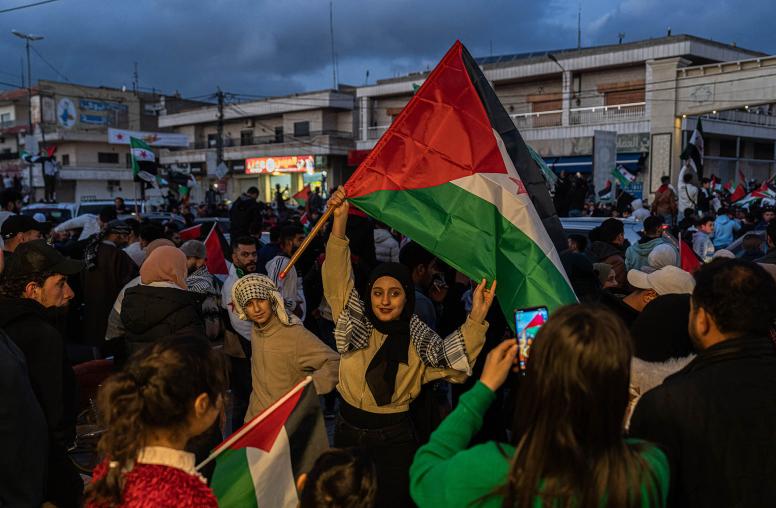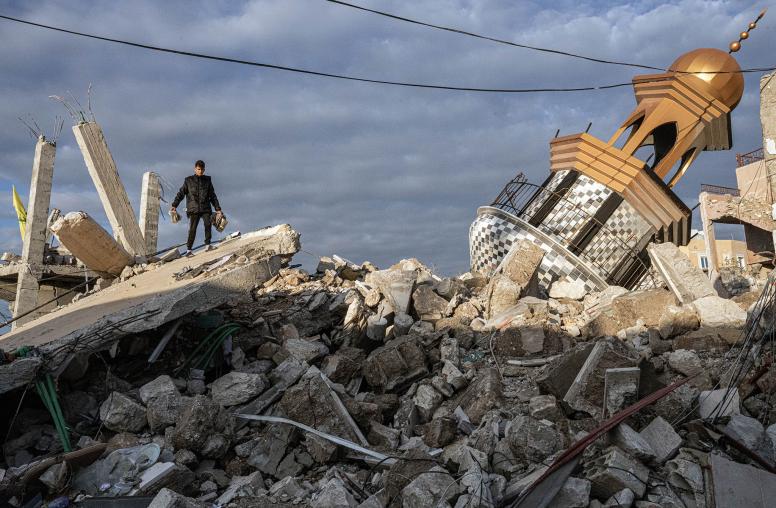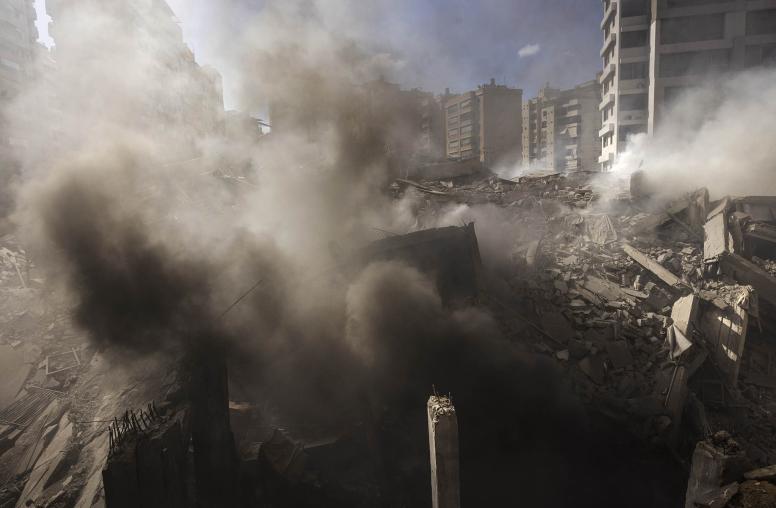Lebanon’s Protests Set to Pick up Despite Coronavirus Pandemic
COVID-19 has exacerbated the country’s economic woes as protesters’ long-held demands remain unaddressed.
Protests erupted in Lebanon last year over the country’s lagging economy and sclerotic, sectarian-based political system, but slowed amid the global pandemic. The small Mediterranean nation’s economy is in free fall, with the World Bank estimating more than half the population living below the poverty line. Protesters were forced to switch tactics amid the coronavirus and the lock down measures have forced even more Lebanese into poverty. But protesters are planning to return to the streets as COVID precautions ease. USIP’s Elie Abouaoun and Osama Gharizi discuss how the government has responded in the months since protests erupted in October 2019, how the protesters adapted during the pandemic, and the role of Hezbollah.

Has the government done anything to either cooperate or push back on protesters’ demands?
Abouaoun: The nature of the political system in Lebanon undermines the conventional role of the “government” as the holder of the executive power and shifts the decision making to a pool of leaders who can be inside or outside the executive branch. Neither the caretaker government, in power from October 2019 to January 2020, the successor government of Prime Minister Hassan Diab, nor the other power holders in Lebanon showed a good understanding of the many issues that triggered the protest or demonstrated they have political will to address even one concern.
While Lebanon is going through an existential financial crisis, the only noticeable achievement so far is an economic recovery plan adopted by the government. Although the main elements of the plan seem relevant, its feasibility is seriously challenged by the lack of political will. As much as a plan is needed, the authorities in Lebanon failed to work on basic and necessary measures to regulate capital controls, impose stricter oversight over private banks, launch investigations and audits into specific sectors known to harbor corruption, or determined the losses resulting from the skewed practices of the Central Bank since 2016, among other things.
The icing on the cake remains, however, a deep rift between the government and the Central Bank. The bank has kept a close hold on key information, preventing Lebanon from providing a clear picture about its current financial situation, complicating efforts to negotiate a bailout package from the International Monetary Fund (IMF). Further, and perhaps most worrisome, are reports of clashes between members of Lebanon’s team negotiating with the IMF.
How have the protests adapted to being under lockdown, without the option for public demonstrations? With the lifting of lockdown measures, will we see renewed protests?
Gharizi: The protests never fully disappeared. After an initial lull due to the lockdown measures imposed by the government to combat the spread of COVID-19 in March, protesters have taken to the streets on various occasions over the past three months. Though not as large as previous gatherings, demonstrators continued to rally against a litany of issues that have caused day-to-day hardships for citizens, including electricity cuts, corruption, a free-falling currency, and the inability of the government to effectively respond to a rapidly deteriorating economic situation, one that has been compounded by the impact of the public health crisis. Anger against banks and the banking system has been particularly acute the past two months, as capital controls and other measures have severely curtailed citizen access to their accounts.
It’s important to note that the demonstrations are not monolithic in nature and, unlike the early days of the protest movement, have been politicized in certain ways: some opposition political parties have been quick to mobilize supporters to score political points against those in government, while others in government have encouraged the targeting of the architects of the failing economic order to redirect popular anger toward their political adversaries. This does not mean the protest movement has been cajoled or drowned out by political partisans but merely that the movement that initially broke out in October 2019 has been exploited by the political establishment to pursue narrow parochial objectives. Illustrating the divide is the fact that there have been clashes between protesters and the partisans of some political leaders as the former have begun to protest outside the residences of those in power.
Protesters have also taken to online forms of opposition, using Twitter, Instagram and Facebook to monitor and hold accountable the political establishment. With the gradual lifting of lockdown measures and in the absence of tangible solutions to the myriad ills afflicting the country, more targeted and focused demonstrations are expected. Already, protesters have called for street demonstrations to begin again on June 6. In anticipation of this, some political leaders have been vocal in stating their opposition to demonstrations that block roads or that target the residences of politicians. In the case of the latter, one minister of parliament even went so far as to call on protesters to be attacked and shot at if they do so.
What role has Hezbollah played?
Abouaoun: Hezbollah must keep several balls in the air. On the one hand, the party’s involvement in the Syrian conflict is still significant. On the other, the collapse of the banking sector in Lebanon affected Hezbollah’s constituency—despite the fact that the party itself manages its own parallel and informal financial system.
The demonstrations that happened in Hezbollah strongholds since October revealed that part of its constituency and many of its core allies—while aligned to the party’s policy on Israel, Syria, and Iran—are fed up and ready to take the streets to protest what they consider the party’s cover up of corrupt political practices.
The U.S. maximum pressure campaign on Iran, compounded with the protracted conflict in Syria, the financial crisis in Lebanon and the aftermath of COVID-19 are already weighing heavily on the party and pushing its leadership to be cautious and pragmatic. They know that any major political or security shakedown will drag Lebanon—with the party and its constituency—into the Sunni-Shia conflict prevailing in the region. So far, Hezbollah considers this scenario an existential threat and is investing a lot to prevent it from happening. This has translated into unconditional support to the government, a surprising lack of objection to approaching the IMF to help stave off an economic collapse, and a very opportunistic use of the pandemic to assert its role as a social support system for its constituency.



